Middle Chuba (South Sikkim), Sikkim
For 15 farmers living in Chuba, in South Sikkim, 56 kilometres south-west of the state capital, Gangtok, an initiative launched in 2014 by the Krishi Vigyan Kendra (KVK) Namthang, has changed their lives significantly. They now rear and breed Angora rabbits, and Angora wool farming has become an economically viable alternative to traditional farming practices in the region.
Arun Kumar Gurung, panchayat president of the Chuba-Perbing GPU (gram panchayat unit), and one of the 10 farmers who were part of the pilot project, said they had benefitted immensely from the Angora enterprise.
“Angora rabbit farming has changed our lives for the better. We could not have asked for a better alternative to traditional farming,” Gurung said. He said the family income had almost tripled when compared to what it was when they were only growing vegetables and rearing sheep.
Before they switched over to Angora wool farming, the farmers of Middle Chuba grew seasonal vegetables such as potatoes, cabbages, beans, peas and cauliflowers. “Vegetable cultivation and dairy were our only source of income and we barely made any profits,” Gurung added.
South Sikkim falls under the dry belt of Sikkim and most of the inhabitants here are farmers who depend entirely on rain water for irrigation. Their major source of income is from agricultural and livestock production, which was often meagre. When the KVK South Sikkim was set up in Namthang block of South District in 2007, it began to explore alternative sources of income for the farmers of the region.
And, the Angora rabbit project seemed a viable option. Since many of the farmers in Chuba were also sheep herders and were already involved in weaving sheep wool, an indigenous handloom art of the Gurung community passed on to them from their predecessors, this village was chosen for the project.
Initially, 10 farmers from the Chuba-Perbing GPU (gram panchayat unit), were given Angora rabbits to breed. Angora rabbits are bred for the light-weight long fibres of their coat which gives the world famous Angora wool. The wool is said to be free of allergy-causing qualities of wool from other animals and therefore much sought after.
The start and the fillip
In 2014, thirty parent Angora rabbits were procured by KVK Namthang from a nucleus farm that was established at Rabum farm complex, Lachen in North District of Sikkim. These parent stocks of Angora rabbits were originally from a farm of the Indian Council of Agricultural Research in Kullu, Himachal Pradesh, over 2100 kilometres away from Lachen.
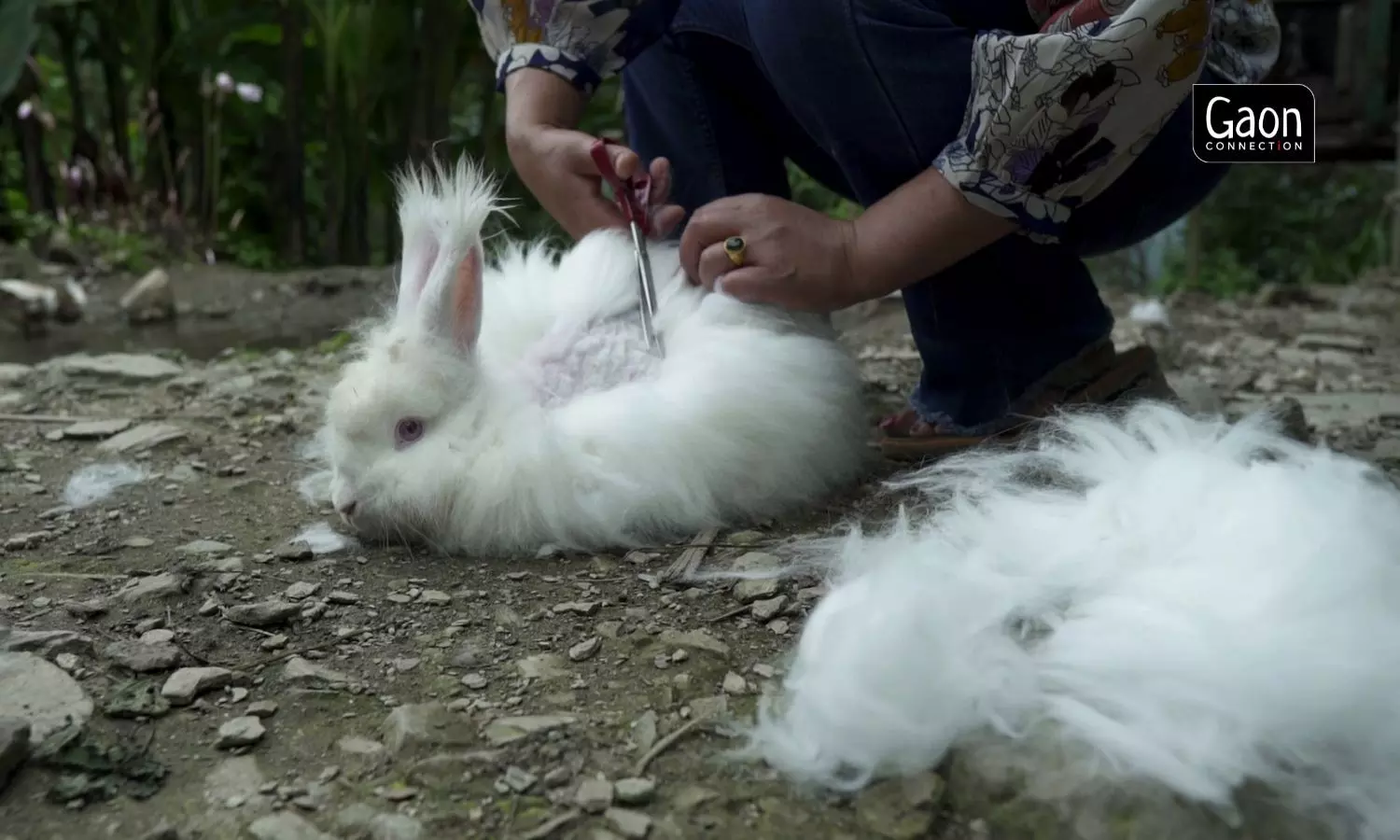
Ten farmers from the Chuba-Perbing GPU were given Angora rabbits to breed. They are bred for the light-weight long fibres of their coat which gives the world famous Angora wool.
The rabbits are of the German Angora breed which has a better wool yield than other breeds. The cost of each rabbit depends on the colour of its wool. The pure black ones are the most expensive at about Rs 3,500 per rabbit. The grey ones cost Rs 3,000 and the white ones are priced at Rs 2,500 each.
Angora rabbits give birth 30-32 days after mating. The litter size varies from 5 to 11 babies. The mother starts shedding wool around the 28th day of pregnancy. The baby rabbits, called kittens, open their eyes after 15 days. This is the time when the farmers have to be extra vigilant as the mother rabbits are known to sometimes eat their new-born litter. The mother and the babies are then nourished with vitamins, supplements and deworming medicines.
Also Read: Beekeeping gives the Santhal tribal women in Banka, Bihar, a sweet taste of success
Interested farmers who buy the rabbits are given training and closely monitored by other experienced farmers for about six months.
According to Dr. Chewang Norbu Bhutia, Subject Matter Specialist (Animal Science), KVK, South Sikkim, “The project got a fillip in 2018, when NABARD (National Bank for Agriculture and Rural Development) sanctioned a project, titled Angora Farming – An Avenue for Livelihood Improvement and Income Generation for the Farmers of South Sikkim.” It was initiated to augment the income of the farmers in just one village, Middle Chuba in Namthang block by KVK, South Sikkim in 2018-19, and 10 families were chosen to be part of the project.
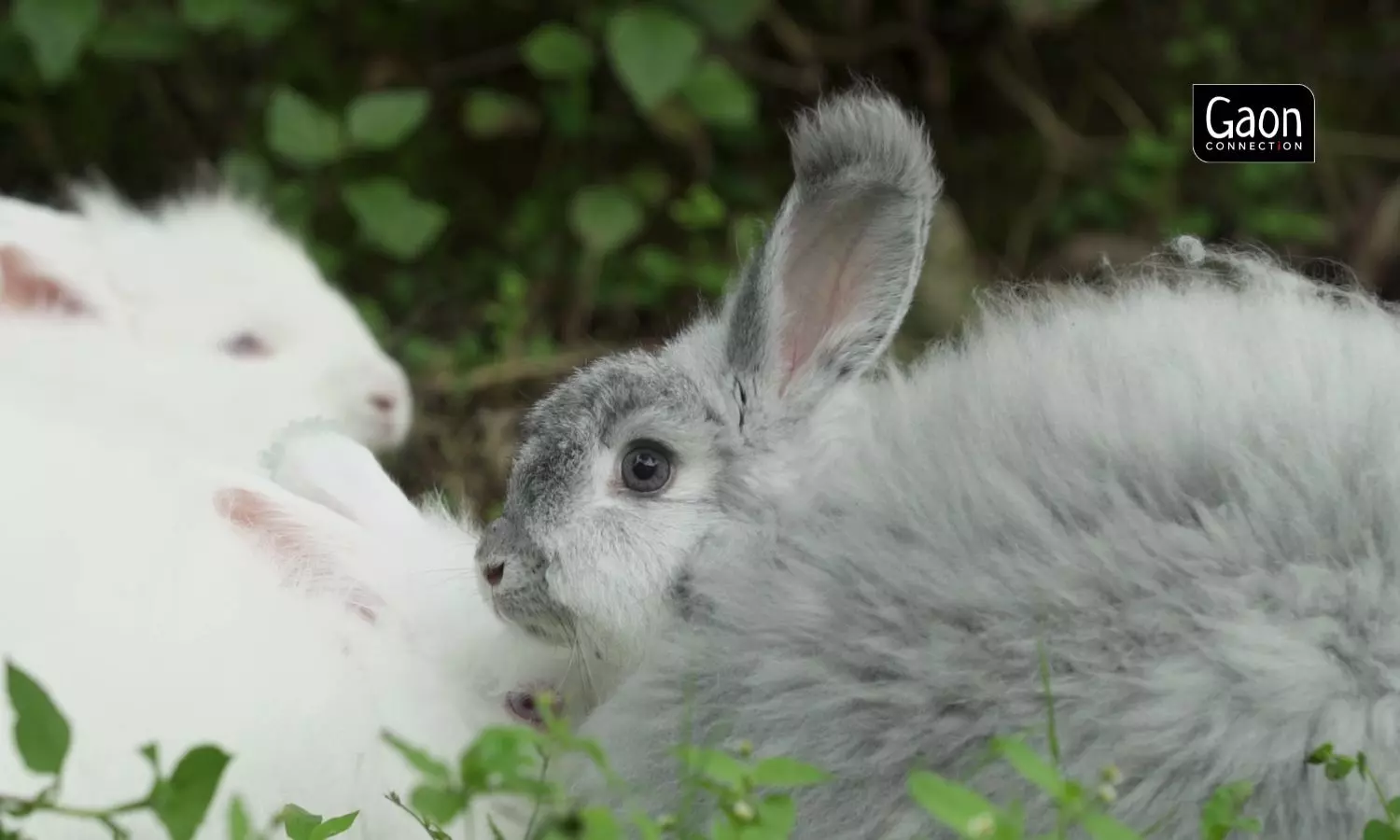
The rabbits are of the German Angora breed whose cost depends on the colour of its wool. The pure black ones are the most expensive.
Farmers were given hands-on training on building hutches for the rabbits, breeding dos and don’ts, and wool extraction. This was followed by a workshop on how to make yarn out of the wool at the Angora farm in Rabum, North Sikkim, under the department of Animal Husbandry & Veterinary Science, Government of Sikkim.
Officials from the Namthang KVK provided the farmers all the help they required by way of resources, technical knowhow and information about managing and caring for the Angora rabbits. For the next three years, the farmers and their families followed the instructions of the KVK closely and took good care of them.
Profits and windfall
“Once we received the training on how to look after the rabbits, what to feed them and where to house them safely, we were good to go,” the 52-year-old farmer said. At the start of the project he had five female and two male rabbits, today he owns 25 Angora rabbits with more litters on the way.
In 2016-17, the family grossed approximately Rs 69,000 and Rs 39,000 as net income just through sheep farming. He made an additional profit of around Rs 25,000 from the Angora rabbits in the same period.
Gurung’s seven rabbits produced about 12 kgs of wool which fetched him around Rs 14,000. He also managed to sell seven other rabbits which earned him an additional Rs 11,000.
After the intervention by KVK South Sikkim, in 2020 the profits have marginally increased. Just from 55 Angora rabbits, around 45 kgs of wool was produced. The gross income from the sale of wool products alone stood at Rs 59,500 and net income at Rs 48,500. From the sale of rabbits, Gurung made a profit of Rs 98,000. The combined income from rabbit farming was Rs 146,500 in the year 2020.
The production of wool has increased 290 per cent over the base year. At the same time, the profits from Angora rabbits have seen an increase of 274 per cent in the case of sale of rabbit wool and 834 per cent in the sale of live animals.
Similarly, the earnings of all the farmers who became a part of the Angora project have registered an increase.
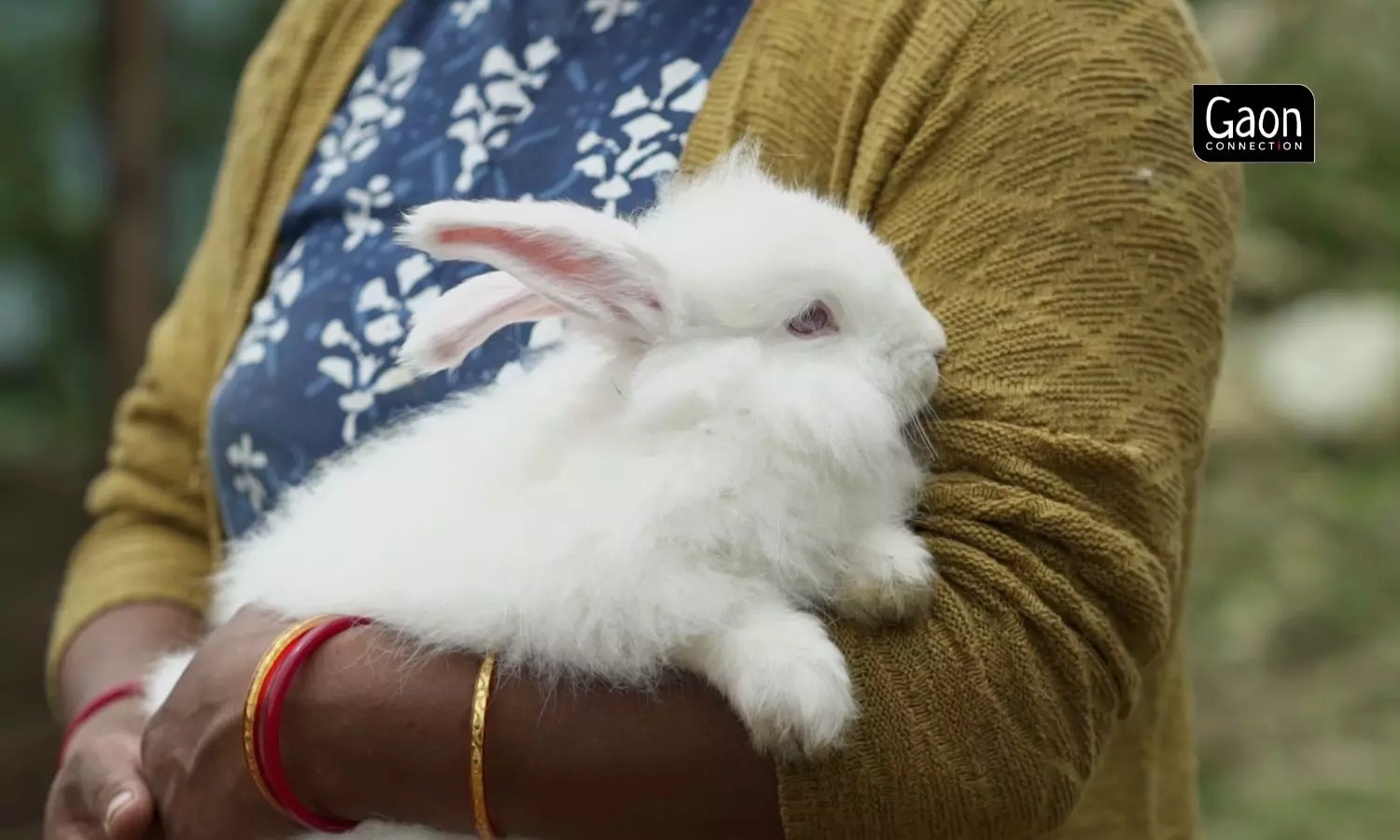
Farmers were given hands-on training on building hutches for the rabbits, on breeding dos and don’ts, and wool extraction.
Angora rearing gains momentum; rural women benefit too
Dr. Chewang Norbu Bhutia said Angora farming has gained momentum in the state. The success of the Angora project in Chuba has generated interest across Sikkim and now some progressive farmers in West Sikkim have also taken it up. According to Arun Kumar Gurung, local government agencies procured rabbits from Chuba and supplied them to farmers in West Sikkim. Some farms in Chuba today have more than 50 rabbits.
The farmers are making more money through the wool as well as rabbit manure that is used in vegetable cultivation. The climatic condition of the area (altitude 4,500 ft above sea level) is conducive for the growth and development of Angora rabbits. The performance of Angora rabbits has been excellent and the quality of sheared wool is also superior and fetches a higher price when compared to wool from other animals, Bhutia added.
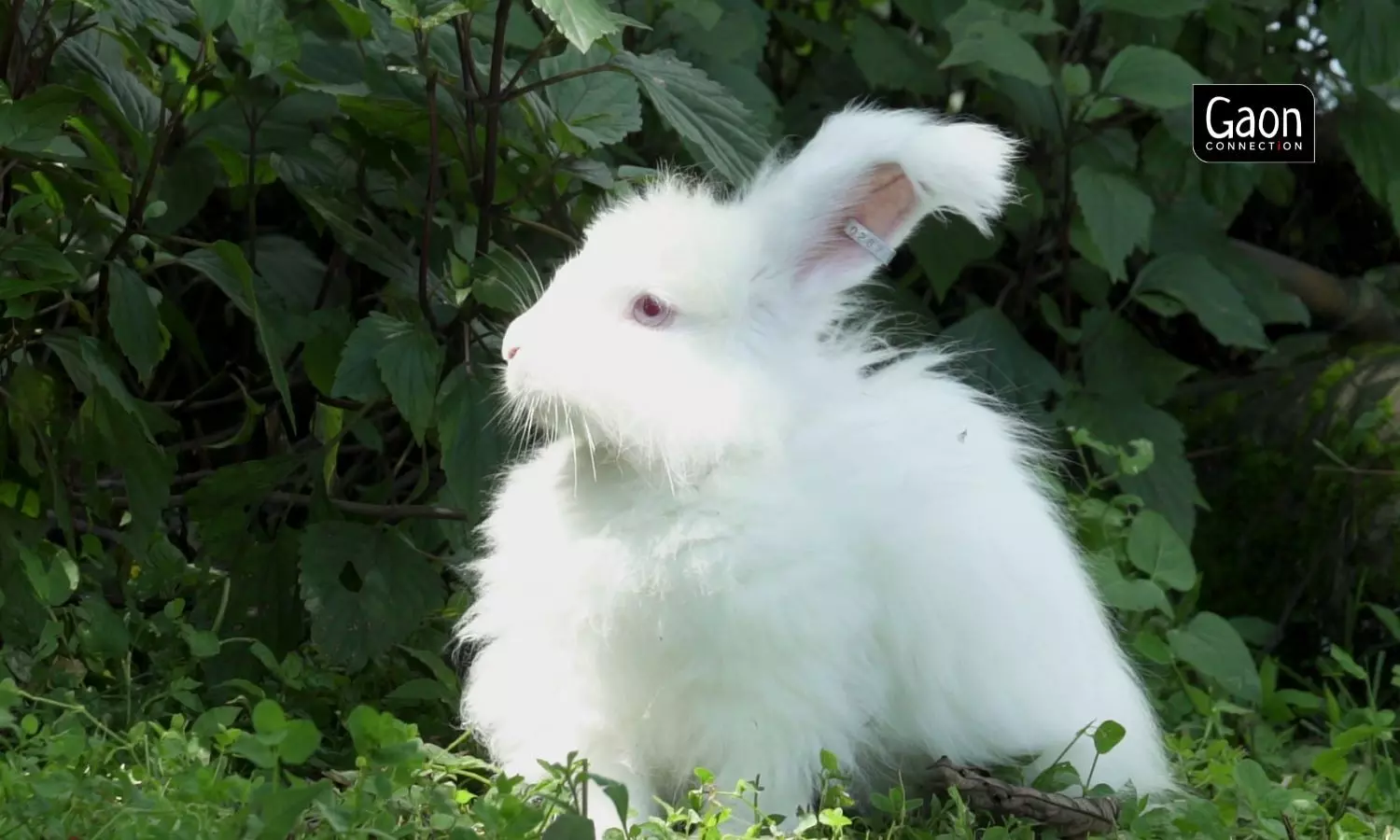
The production of wool has increased 290 per cent over the base year. At the same time, the profits from Angora rabbits have seen an increase of 274 per cent in the case of sale of rabbit wool and 834 per cent in the sale of live animals.
Rupa Gurung, the wife of Arun Kumar Gurung who helps her husband in the rearing of rabbits, is part of a local self-help group (SHG) consisting of the women of Chuba who are engaged in Angora and sheep wool farming.
Rupa was one of the 10 women farmers selected to attend the farm innovators conclave on the Foundation Day of Indian Council of Agricultural Research (ICAR) in Delhi on July 16 and 17, 2019 at New Delhi. The SHG has been actively participating in Kisan Melas organised by KVK and other government and private sector organisations across the state and its members have showcased their products made from Angora wool.
“The wool from the rabbit is extracted every three months, hand-spun in a traditional wooden charkha and turned into yarn by an intricate process as the wool is very fine and delicate. The finished wool is then knitted into caps and mufflers by women,” Rupa Gurung said. Around 10 caps are knitted from one kilogram of wool. Members of the SHG who knit the caps are paid about Rs 150 per cap.
According to Arun Kumar Gurung, approximately 19 kgs of wool can be harvested from the 15 farms engaged in Angora farming, in a little less than a year.
The successful implementation and completion of the project has had a multidimensional impact on the growth and popularity of Angora rabbit farming in the state. The economically under-privileged inhabitants of the project area now have an alternative source of income, which will improve their standard of living. The self employment opportunities generated by the project can be tapped by the educated unemployed youth and women in particular, to take up Angora rabbit husbandry as a viable and sustainable means of livelihood.
Need to scale up
As the production of the Angora wool is still limited, the caps and mufflers are mostly sold locally in Sikkim. A single rabbit produces about 100 gms of good quality wool at a time, which is just enough for a medium sized cap. A muffler takes about 500 gms of wool.
These Angora wool caps have become very popular in Sikkim and the demand for them has risen. A medium-sized cap is sold for Rs 1,500 and above, depending on the colour of the wool and pattern. The Angora wool caps are also sought-after for it is believed that the wool has therapeutic value. It is claimed that if one wears an Angora wool cap during a migraine attack, it provides relief.
According to the Gurungs, the village has also started to receive orders from across the state and even from other states. At the moment it is a struggle to meet the demand, but they feel once the production of wool goes up, they will be looking at other ways to promote and sell them.
KVK South Sikkim is keen to up-scale the enterprise in other parts of South District.
“Angora farming has the potential to generate additional income through value addition of fur in making caps, mufflers etc.,” Bhutia said. Even after the completion of the project period, Angora farming will be popularised amongst the farmers as a horizontal expansion, he said.
Also read: Tribal farmers in Mayurbhanj earn an annual profit of Rs 1 lakh an acre by cultivating rubber
“KVK as a pioneer institute will take a step forward to promote Angora farming in the suitable climatic areas of South District and Sikkim as a whole,” Bhutia added.
Addressing the challenges
The project has not been without its challenges. One of the things the farmers miss the most is the absence of a common facility centre (CFC) where they could work together.
Creating the final woollen products using traditional methods is slow. They need mechanised help to speed up the manufacturing process, as was the need for better storage facilities for the wool.
Carding machines, driers, spinning machines, etc. that could speed up the process of making wool are expensive. Finally, the hilly terrain of the area poses challenges in communication and transportation matters.
However, things are looking up as a CFC is under construction in Chuba. Trainers will soon impart skills in machine weaving and knitting in the village. Efforts are underway to see the best way Angora wool can be made more durable and more marketable.
According to Bhutia, “Samples of angora wool were sent to NIRJAFT (National institute of Research for Jute and Fibre Technology) West Bengal to test its quality and find out if it could be blended with cotton or jute. The blending with other synthetic fibres has been successful,” he said.
Also Read: Lemongrass cultivation greens Banka’s barren land and promises profit to farmers
Farmers are being provided with various carding combs along with other accessories. The sanction has been given to provide the farmers with modern and well-equipped machinery for processing the Angora wool. An Angora Wool Processing Centre where the farmers will have access to all the latest automatic technologies like carding machine, plasma technology, spinning, roving etc. is also in the pipeline.
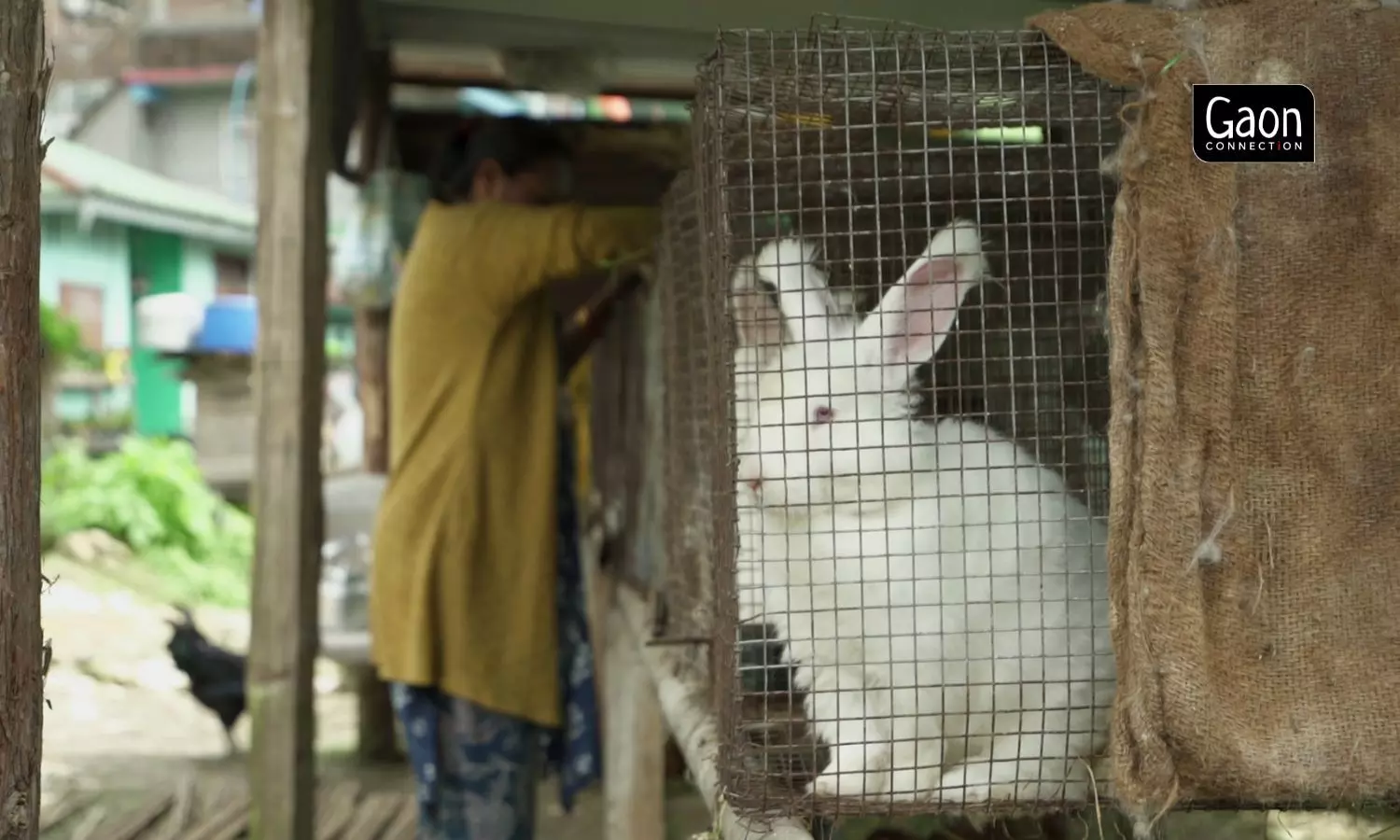
A single rabbit produces about 100 gms of good quality wool at a time, which is just enough for a medium sized cap.
KVK South Sikkim has also assisted the Chuba rabbit farmers to upgrade and modify the existing traditional spinning machines. It has connected the farmers to designer groups to help them come up with contemporary ideas that will help them with marketing and showcase their products in the global market.
NABARD’s Chuba Weavers Off-Farm Producers’ Co-operative Society Ltd has more than 200 members from four GPU clusters under Namthang South Sikkim. The Angora wool products will now be marketed under the exclusive “Product of Chuba” tag. The farmers are also working on developing natural dyes from organic fruits and vegetables for the Angora wool, which will greatly enhance the projects.




















